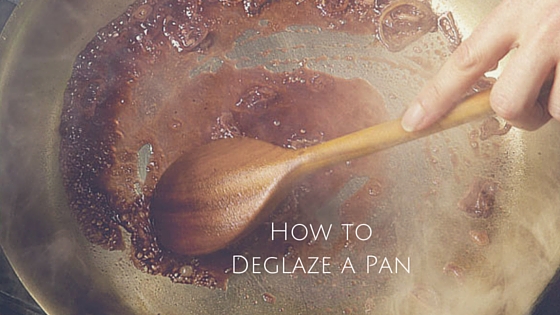If you need to whip up a sauce to top off a steak or a pork chop, you’ve probably seen a recipe that asks for the deglazing of a pan to begin a sauce. But if you’ve never had to deglaze a pan before, you may be scratching your head about what that means.
To deglaze a plan is, in its most basic form, to dilute the leftover meat bits in water or wine to create a sauce or glaze. Because the pan is hot when you do this, and the liquid you pour in is cold, it forces the pan leftovers to get unstuck to the pan and mixed in with the liquid. The leftover meat bits are used because they’re so delicious (and why waste them?) and are full of flavor and whatever spices you cooked the meat in. In French cooking, these leftover bits are called “fond”, which literally translates to “bottom”.
How do you deglaze a pan?
Once you finish cooking your meat – likely in a sauce pan – you’ll want to start by removing any pieces that are completely burnt. Often people will just leave this in, but it can contribute to a burnt taste if you don’t. If there’s any fat left over in the pan, drain most of it out and leave the actual physical bits of food.
Next, you need to turn the heat on the stovetop up to high. Add in the water or wine (if you want to be really authentic and chef-like). The amount you add in depends on how much sauce you’re trying to make, but most chefs agree that a generous splash of about a quarter of a cup will suffice.
Use a wooden spoon or spatula to mix the fond that rises up from the pan. Stir it around until it’s completely dispersed in the liquid and then turn the stove heat down. To make the sauce thicker, simmer it over medium heat until it thickens (this is called reducing). Once your sauce is at the consistency that you want, you’re ready to season it (if it even needs any other seasoning). Often, the seasonings from the meat and the pan are enough to perfectly season your sauce.





